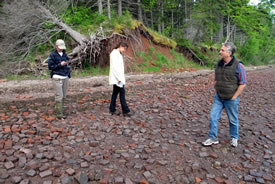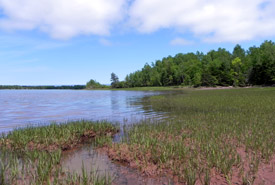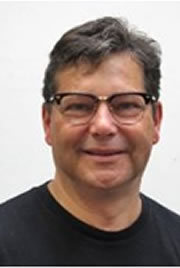Connecting with the social landscape: Local knowledge goes a long way in conservation

Danielle Horne (NCC), Jamie Fraser (NCC) and John Caraberis on the brick beach, NS (Photo by NCC)
As professionals involved in the conservation of natural landscapes we need to always remember that the associated “social landscape” is critical to our success. One of the pleasures I’ve enjoyed throughout my career is the opportunity to meet the locals: landowners, neighbours, naturalists, business owners, and others who live, work and play in the areas in which we work.
The local knowledge and history to be gleaned from those individuals is not only interesting in its own right but is often central to our securement and stewardship actions. As well, the relationships we establish through those activities help boost our presence and credibility. They have a positive impression of us, we of them; we all win.

Pugwash Estuary, Nova Scotia (Photo by NCC)
My belief in fostering relationships was affirmed again over the course of a couple of days of fieldwork recently at the Pugwash Estuary. The Nature Conservancy of Canada (NCC) owns about 1,100 acres (445 hectares) at this important site within the Nova Scotia Northumberland Straight Natural Area. On this particular day, we were walking a trail on one of our properties that leads down to the estuary. A low tide at the time of our visit revealed a shore of old bricks strewn over a fairly large area; clearly from a long time ago. While returning along the trail we crossed paths with neighbouring landowners — a husband and wife, who, as we learned, walk the trail almost daily.
We described our discovery of the bricks. The husband then explained that a long-ago brick factory was located near the property and that barges were loaded along the shore there for transport. I was curious to know if the area we saw was the result of a single big spill or the accumulation of several years of errant bricks overboard but they weren't certain.
They did however know that NCC owns lands adjacent to their property. Now they can associate friendly people with the organization; people with an appreciation for their presence and knowledge. With some further conversation they may even become interested in volunteering as local property stewards on our behalf.
John Caraberis, an NCC Atlantic Region board member who has long lived in the Pugwash area, was also present at that encounter. John — who has extensive knowledge of the local area — was with us to help determine our precise boundary location with respect to an adjacent old camp. In addition, John and his partner Bonnie graciously provided room and board for us for the rainy overnight. BBQ chicken and wine always go down better in good company. They also provided a canoe and gear for us to monitor a conservation agreement on an island in the estuary — a property that was donated by John and Bonnie many years ago.
John is also a board member of the Friends of the Pugwash Estuary — a group of local people who share an interest in conservation. That connection has been mutually beneficial. For example, they have helped us out with our Conservation Volunteers events. On this most recent trip NCC staff assisted them with their annual Community Aquatic Monitoring Program.
As much as I value the conservation of biodiversity I also value the connections I make with the people in those landscapes. I feel lucky that my work gives me the opportunity to work on both sides of the fence.


